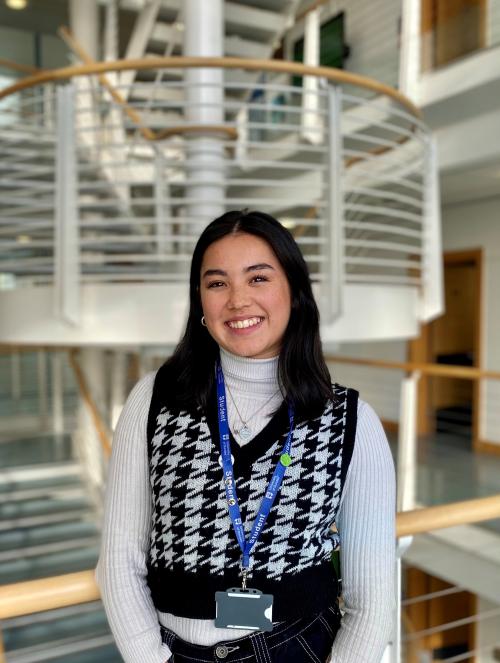
For many years, it has thought that eight types of ubiquitin chain can be formed in cells in which the C-terminal carboxylate of ubiquitin forms isopeptide bonds with the ε-amino group of any of the seven lysine residues in another ubiquitin molecule or a peptide bond with the α-amino group of the N-terminal methionine residue of another ubiquitin (Met1-linked ubiquitin). These ubiquitin dimers adopt different conformations and interact with distinct ubiquitin-binding proteins that function to decode the ubiquitin signal.
Now Elisha McCrory, a graduate student in Philip Cohen’s lab in the MRC-PPU, in collaboration with Vyacheslav Akimov and Blagoy Blagoev at the University of Southern Denmark, Odense, have discovered that four additional ubiquitin linkage types are formed within minutes when macrophages are stimulated with the TLR7 activator R848 (also called Resiquimod). Exploiting UbiSite, a technology developed in Blagoy’s lab a few years ago, the team found that the C-terminal carboxylate of ubiquitin forms ester bonds with the hydroxyl groups of Thr12, Thr14, Ser20 or Thr22 of another ubiquitin molecule. The paper has just been published on-line in the Biochemical Journal doi 10.1042/BCJ20220510 .
These ester bonds appear to be present within more complex hybrid ubiquitin chains that also contain Lys63-ubiquitin and Met1-ubiquitin linkage types and are themselves attached covalently to four components of myddosomes (MyD88 and IRAKs 1, 2 and 4). Some of the ubiquitin chains are initiated by ester bonds in which the first ubiquitin in the chain forms ester bonds with the hydroxyl groups of serine and threonine residues in the myddosome components. The team went on to identify the specific serine and/or threonine residues in MyD88, IRAK2 and IRAK4 that become attached covalently to ubiquitin.
The ester linkages are formed by the E3 ubiquitin ligase HOIL-1, a component of the Linear Ubiquitin Assembly Complex (LUBAC). Earlier studies by Tsvetana Petrova in the Cohen lab using immune cells from mice expressing an E3 ligase-inactive mutant of HOIL-1 had revealed that failure to form any of these ester bonds increases or decreases pro-inflammatory cytokine production, depending on the ligand and immune cell type (doi:10.1111/febs.15896). This is consistent with the observation that patients with HOIL-1 deficiency display a combination of immunodeficiency and autoinflammation.
The hunt is now on to identify the proteins that interact specifically with these new ubiquitin linkage types, and which are likely to decode the signals introduced by ester bond formation.

